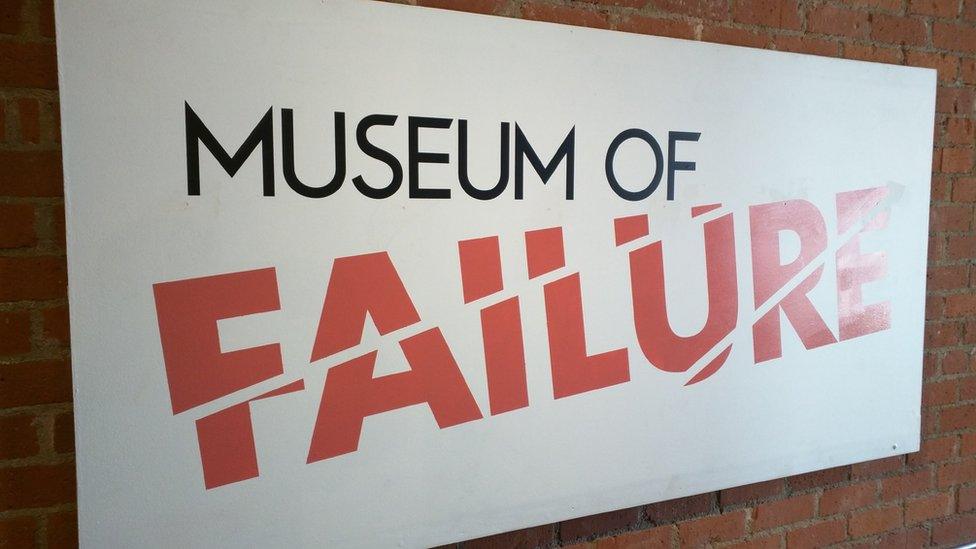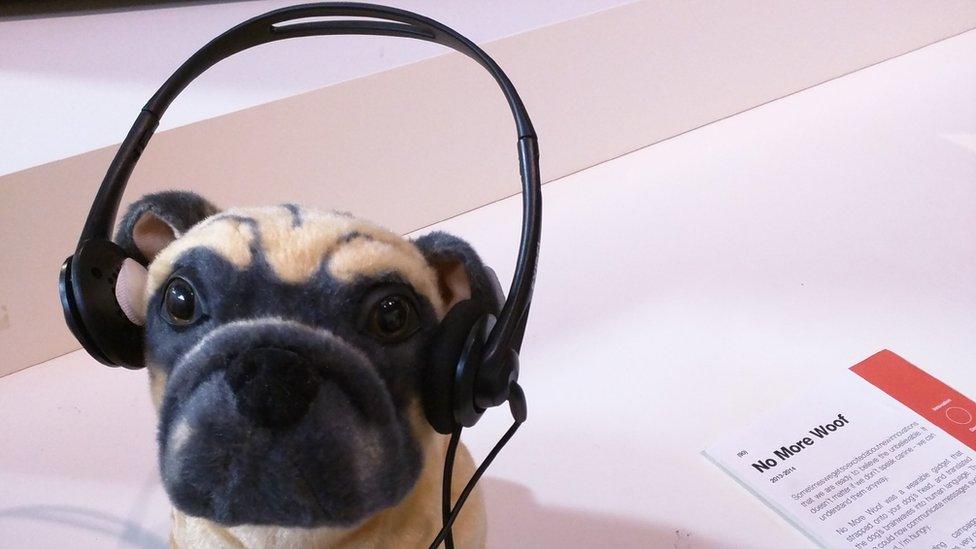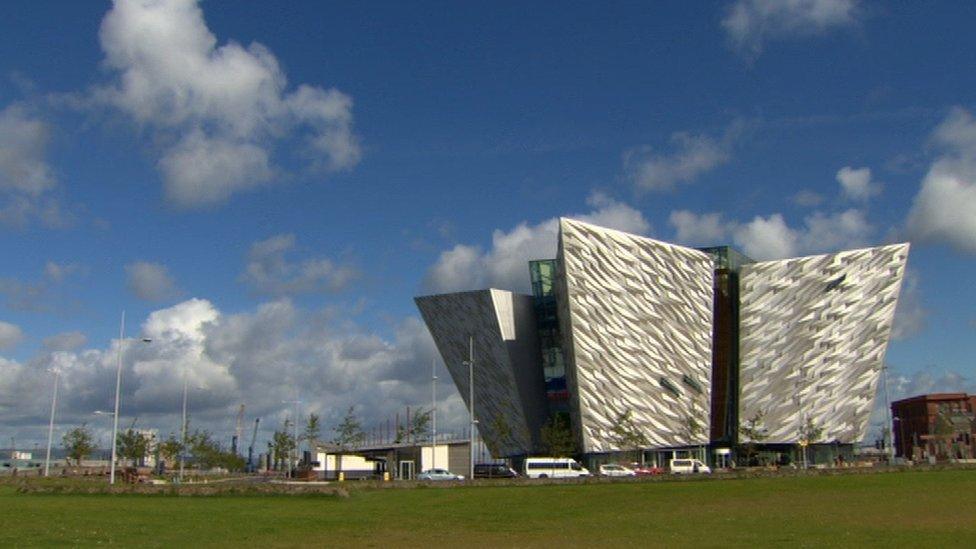DeLorean car features in LA Museum of Failure
- Published
- comments

More than 100 objects that crashed and burned are on display
Curator and clinical psychologist Dr Samuel West called the DeLorean a "must" for his Museum.
He is unapologetic about his choices, which are sarcastically described and rated in terms of innovation, design, implementation and an overall "Fail-O-Meter".
Billions of dollars were spent researching, designing and marketing the 100 or so objects on show at the Los Angeles museum, and they are all ideas which have crashed and burned.
Near the large-size toy of the Dunmurry-built car is a model and picture of the Titanic, which famously sank on its maiden voyage between Southampton and New York in April 1912. with the loss of more than 1,500 lives.

DeLorean and Titanic side by side
Dr West lists the "poor rivets" theory to explain the loss of the luxury liner, although other seagoing vessels are here too.
These include the Vasa, a 17th Century warship that sank immediately after launch, and the Spruce Goose, billionaire Howard Hughes' World War Two airlift flying boat that flew just once.
Unusually, the DeLorean reappeared after its short life, becoming world famous thanks to its role in the Back to the Future movies.
Occasionally you'll still see them driving around the streets of LA - and getting smiles wherever they go.

A barking idea also features in the museum
"In Icelandic there is a saying: 'Distance makes the mountains blue and the people beautiful'," says Dr West.
"Time does make us remember things more fondly than they perhaps were."
Many of the exhibits are from recent technology and depending on your age you may recognize some or all of them - the LaserDisc, MiniDisc, Apple Newton, Betamax, Amazon Fire, DivX and a number of short-lived game consoles, phones and virtual reality innovations that weren't.
Food and drink fans can find plenty to grimace at too - orange-juice infused cereal, the bizarrely-italicised Coke BlaK, Heinz neon ketchup, frozen entrees made by Colgate and Arch Deluxe - a hamburger McDonalds aimed specifically at, er, adults (which was not $300m well spent).
Why do people come?
"The first reason is schadenfreude - pleasure derived for another's misfortune," said Dr West.
And the second?
"We are tired of the corporate propaganda of manufactured perfection," he said.

An idea brewed up by Guinness makes it into the museum too
"Companies screw up all the time, yet very few ever admit to failing. Imperfection humanises these mega-companies.
"Even the most successful and biggest companies risk failure when they innovate."
Even so, he still finds some disasters hard to understand.
"I was surprised that Google Glass failed," he said.
"I remember, when it was launched, thinking it was such awesome technology. Apparently, Google failed by not considering that users wanted the cool tech to actually be useful in some way."
'No More Woof'
Like the Bic for Her pens and other recent ideas, Google Glass was quickly and brutally skewered online, something that few products recover from, no matter whether they change the name, price or design.
However, some things are just a flat out bad idea, like the Grizzly Chomps chocolate cookie, which was designed to look like someone had already taken a messy bite out of it.
Then there was Little Miss No Name, a 1960s era doll nobly designed to show not everything was perfect, but only succeeded in creating something you'd expect to see in a horror film.
Also No More Woof, a 2013 idea that might appeal to millions - just put microphone headphones on your dog and it translates what they're barking into English.
And a misfire from an Irish icon - Guinness Light, which appeared for a moment in the late 1970s, also makes it into the museum.
"Failure is always contextual, both in time and in place," says Dr West, echoing the plaque you see when you first enter his museum: "Everyone fails… it's part of life."
In perhaps the biggest failure of all, the Museum has been such a success in Los Angeles that it's about to open a permanent location in Hollywood.
- Published26 May 2016

- Published28 October 2017
